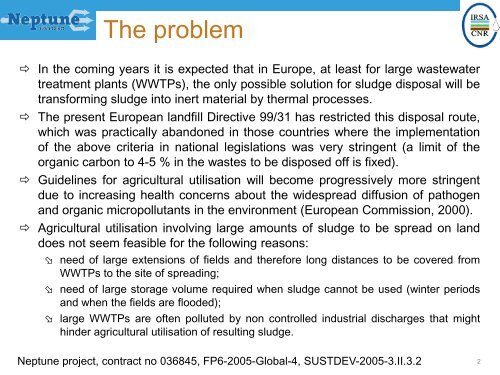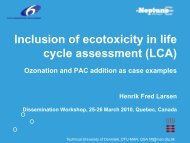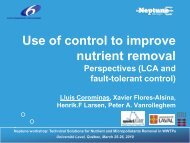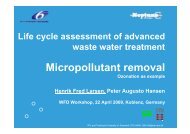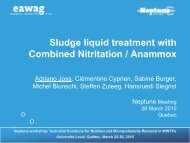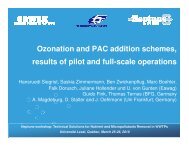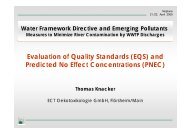Sustainable sludge handling - EU Project Neptune
Sustainable sludge handling - EU Project Neptune
Sustainable sludge handling - EU Project Neptune
Create successful ePaper yourself
Turn your PDF publications into a flip-book with our unique Google optimized e-Paper software.
The problem<br />
In the coming years it is expected that in Europe, at least for large wastewater<br />
treatment plants (WWTPs), the only possible solution for <strong>sludge</strong> disposal will be<br />
transforming <strong>sludge</strong> into inert material by thermal processes.<br />
The present European landfill Directive 99/31 has restricted this disposal route,<br />
which was practically abandoned in those countries where the implementation<br />
of the above criteria in national legislations was very stringent (a limit of the<br />
organic carbon to 4-5 % in the wastes to be disposed off is fixed).<br />
Guidelines for agricultural utilisation will become progressively more stringent<br />
due to increasing health concerns about the widespread diffusion of pathogen<br />
and organic micropollutants in the environment (European Commission, 2000).<br />
Agricultural utilisation involving large amounts of <strong>sludge</strong> to be spread on land<br />
does not seem feasible for the following reasons:<br />
need of large extensions of fields and therefore long distances to be covered from<br />
WWTPs to the site of spreading;<br />
need of large storage volume required when <strong>sludge</strong> cannot be used (winter periods<br />
and when the fields are flooded);<br />
large WWTPs are often polluted by non controlled industrial discharges that might<br />
hinder agricultural utilisation of resulting <strong>sludge</strong>.<br />
<strong>Neptune</strong> project, contract no 036845, FP6-2005-Global-4, SUSTDEV-2005-3.II.3.2 2


